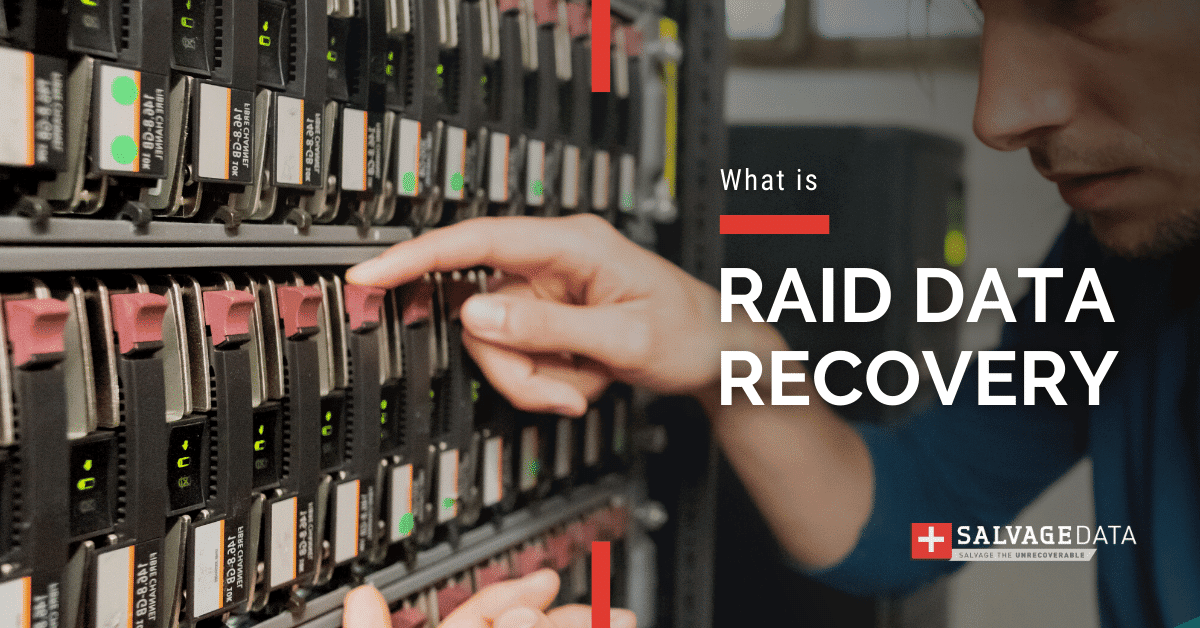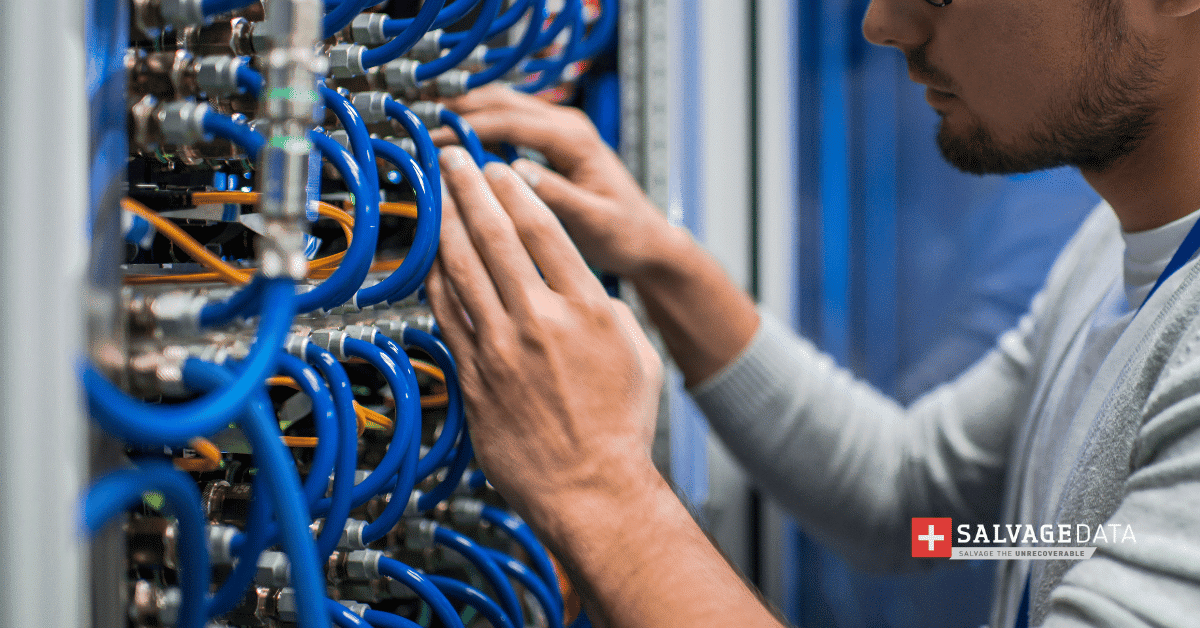Recent Articles
How To Recover Overwritten Files
The Snowflake Data Breach: A Comprehensive Overview
Mac Not Recognizing External Hard Drive: Quick Fix Solutions
How Multi-Cloud Backup Solutions Can Prevent Data Disasters
Capibara Ransomware: What is it & How to Remove
What Should a Company Do After a Data Breach: The Ticketmaster Incident
Secles Ransomware: Removal Guide
What To Do When Your Chromebook Freezes
How to Create Hyper-V Backup
What Is The Best Data Recovery Software For PC

I think there's an issue with my storage device, but I'm not sure Start a free evaluation →
I need help getting my data back right now Call now (800) 972-3282
RAID technology can recover from a device failure and continue to provide uninterrupted access to data while the failed drive is rebuilt.
Although no RAID array is fail-proof, it certainly provides a better chance at data recovery in case of data loss.
Common issues that require RAID data recovery service are degraded mode; unsuccessful rebuild; corrupt data; RAID controller failure; or even water or fire damage.
But if you want to make your RAID even safer for the long run (or for an eventual successful RAID data recovery), some precautions are advised.
To protect your data from drive failure, depending on which level of RAID you choose, there are a few steps you can take.
Here are ten tips to protect your RAID device:

1. RAID Configuration
Choose the most appropriate RAID level and configuration for your volume storage needs.
There are many different types of RAID configurations that vary in their methods of redundancy and performance. With RAID levels, 0 – 5, data is mirrored or duplicated for redundancy.
Your choice of the RAID will directly affect how much storage space you have as well as what type of performance you’ll get out of your device.
A great side note: RAID 1+0 gives better results than either option on its own, so taking time to configure this can be beneficial.
2. Disks Arrangement
Choose your hard drive configuration. One of the easiest ways to prevent data loss on your RAID device is by choosing the correct hard drives for your setup.
There are many factors that go into determining whether or not you’ll be able to recover from a disk failure.
But there are four main factors that will affect how likely you are to lose data after a disk fails:
- How many disks make up an array?
- How many spindles (or individual disks) make up your array? More disks = more performance, but also higher rates of data loss if one fails.
- How powerful is each disk? Does each disk perform at the maximum rate it’s capable of, or does it serve a different purpose and run at a slower speed? Mixed disks in an array can reduce data loss, but it will also reduce data transfer speeds.
- How reliable is each disk? Like the power of each disk, this plays a role in how likely you are to lose data if one fails. It isn’t much you can do about this with RAID devices other than purchasing the best.
3. Hot Spares
You may have heard that when creating or upgrading your RAID device, adding more spindles (or hard drives) helps protect your data from failure. Multiple drives provide extra redundancy and performance for reads and writes operations.
But did you know that you can add hot spares to your configuration so that when one of the spindles fails, the hot spares will come online and take over seamlessly?
This will protect data redundancy in addition to increasing performance.
4. Data Backup
If you’re already using a RAID device for data redundancy, then it’s advisable that you also back up your data regularly.
RAID is great for protecting data from drive failure. But if the original disks are damaged beyond repair or cannot be located when one fails, you risk losing all your data. Unless there’s an additional backup copy somewhere else.
5. Keep Your System Updated
System updates contain security patches for issues with both hardware and software.
So, keeping up with these can help avoid potential security problems that could lead to the loss of important data.
It’s possible that you may need to upgrade your RAID device or system to take advantage of these. But if you’re using a supported configuration then the effort will pay off.
6. Disks Labeling
Ensure that individual disks are properly labeled. If you have a multi-disk RAID system and one disk fails, it’s important that you replace it with the correct disk for your configuration.
Check your hardware documentation for more information about how RAID functions so that you can ensure you choose the right hard drive.
This may sound like a no-brainer, but data loss due to users accidentally mislabeling disks is not uncommon after a failed disk has been replaced.
Besides, proper disk labeling also increases your chances of RAID data recovery. The correct label will help you dismount the failed drive for professional data recovery inspection.
7. RAID Array with SSDs
Use SSDs, or solid-state drives, as your boot device. Solid-state devices have fewer moving parts than traditional platter drives and therefore have a lower rate of failure.
In addition to this, solid-state boot devices can help improve your RAID’s data transfer speeds.
But keep in mind that it’s best advised to set up your RAID array with either just HDDs or just SSDs since combining them won’t improve performance.
8. Disable Hot-Swapping
If you’re using a traditional platter drive as your boot device, then it’s important that the disk is set to fix instead of being allowed to be hot-swapped during operation.
That’s because multiple disks that are being removed and inserted at once can cause system errors.
When working with a multi-disk device, single disk errors must be dealt with before attempting changes to other parts of the array so that you don’t risk losing important data.
9. Rebuild Failed Disks
RAID rebuilds are like replacing one hard drive for another – only much more time-consuming and tedious.
So, in this case, it’s important that you use hot spares to keep your data safe while the rebuild process completes.
If you’re not able to do this because of cost or other issues, then you may want to consider setting up a second RAID system. A temporary RAID system in tandem with your current one will help prevent loss of data if one fails before the rebuild completes.
10. Consider the ECCN
Did you know that solid-state drives are classified under Export Commodity Classification Number 5A992.c?
While these devices cannot store data in the same manner as traditional platter-based hard drives, they are still susceptible to carrying sensitive information.
This means that exported products containing solid-state storage must meet defense-related criteria set forth by the U.S. government.
Even if you’re not exporting these devices, this is an important fact to remember when working with RAID data recovery or replacement of failed disks.
RAID arrays are still susceptible to unforeseen damages beyond our control, like natural disasters, power surges, or malware. If all else fails, be sure that RAID recoverability is guaranteed by SalvageData experts. Overcome data loss and downtime by requesting professional RAID data recovery help!













